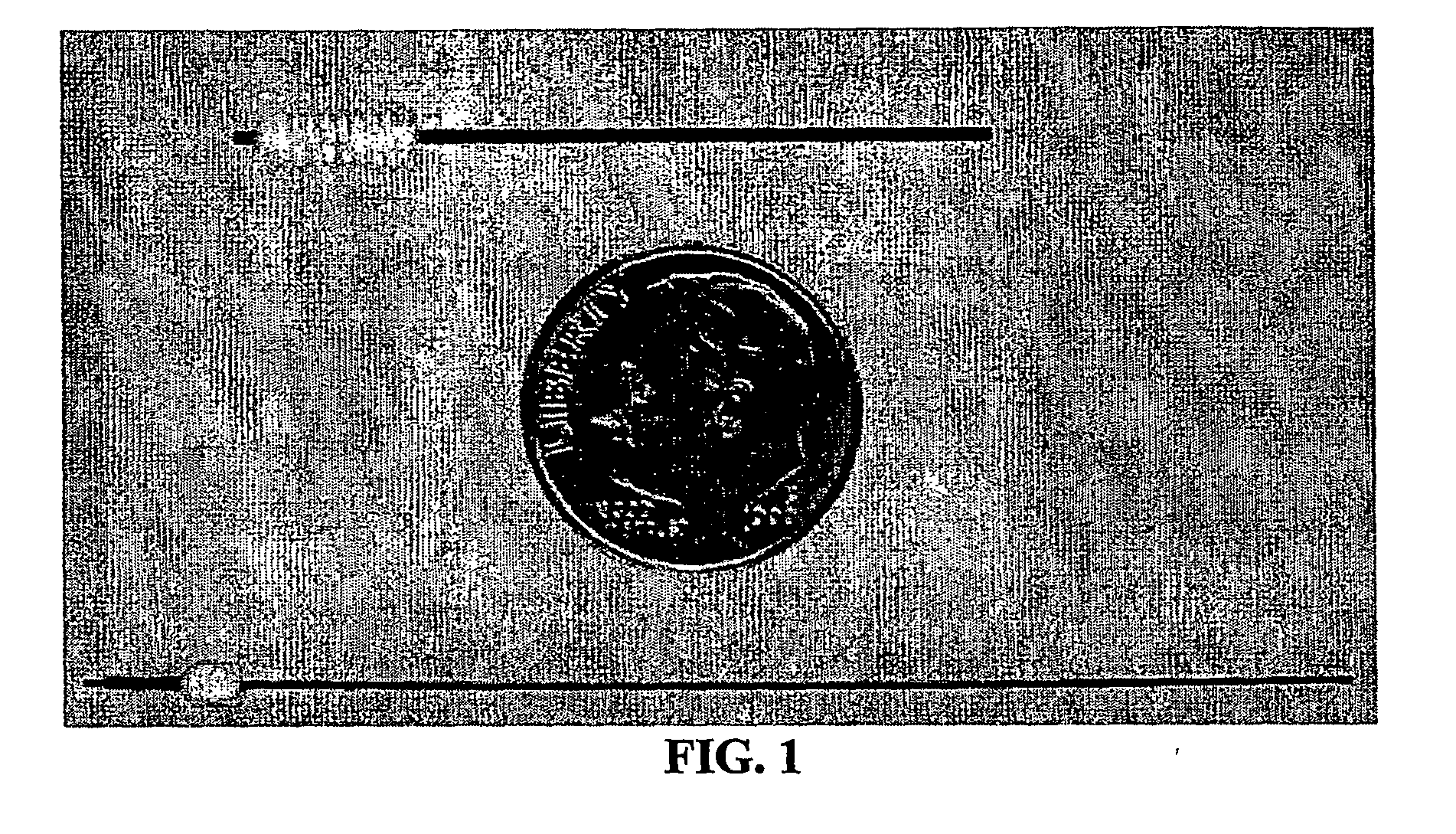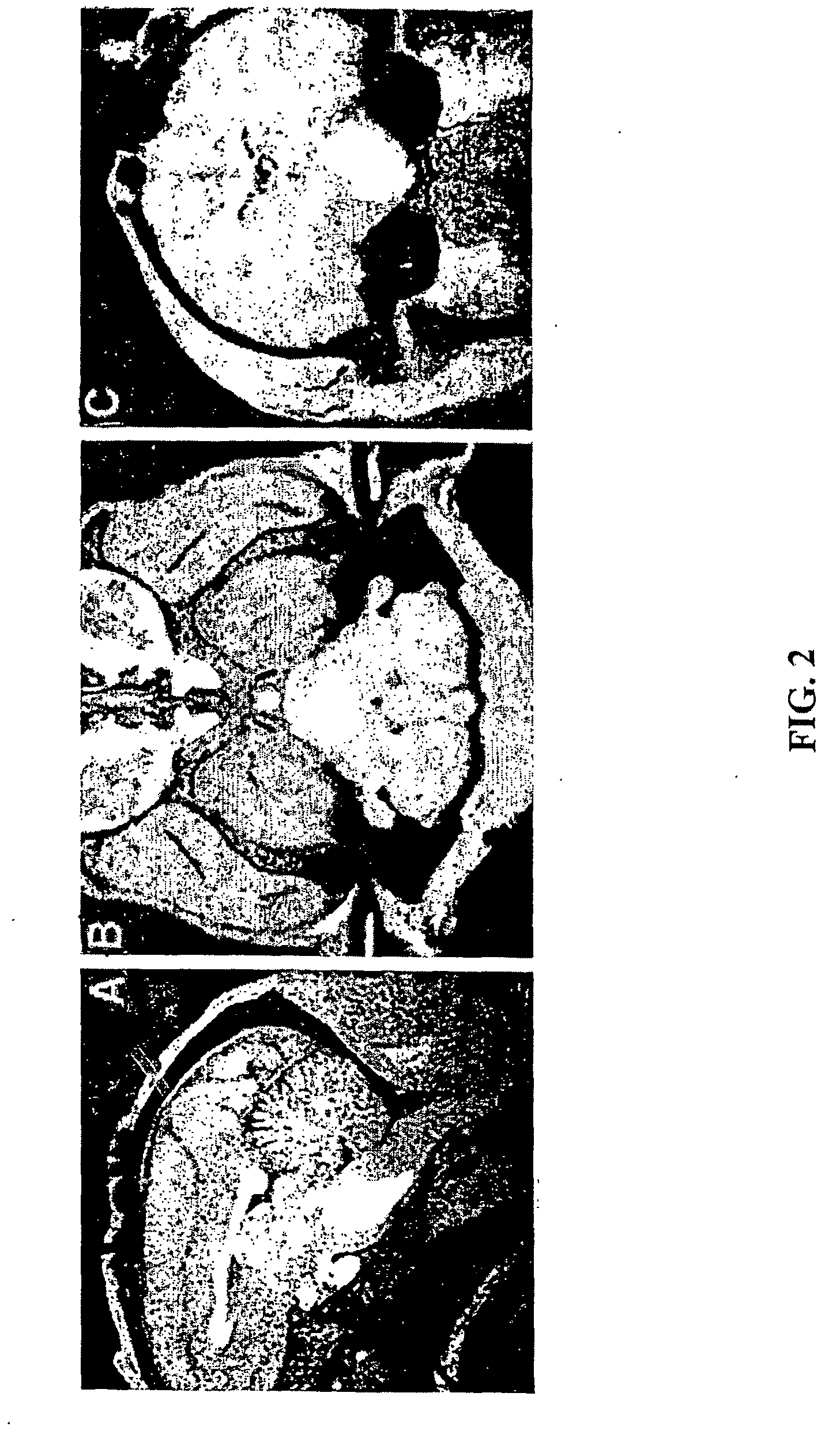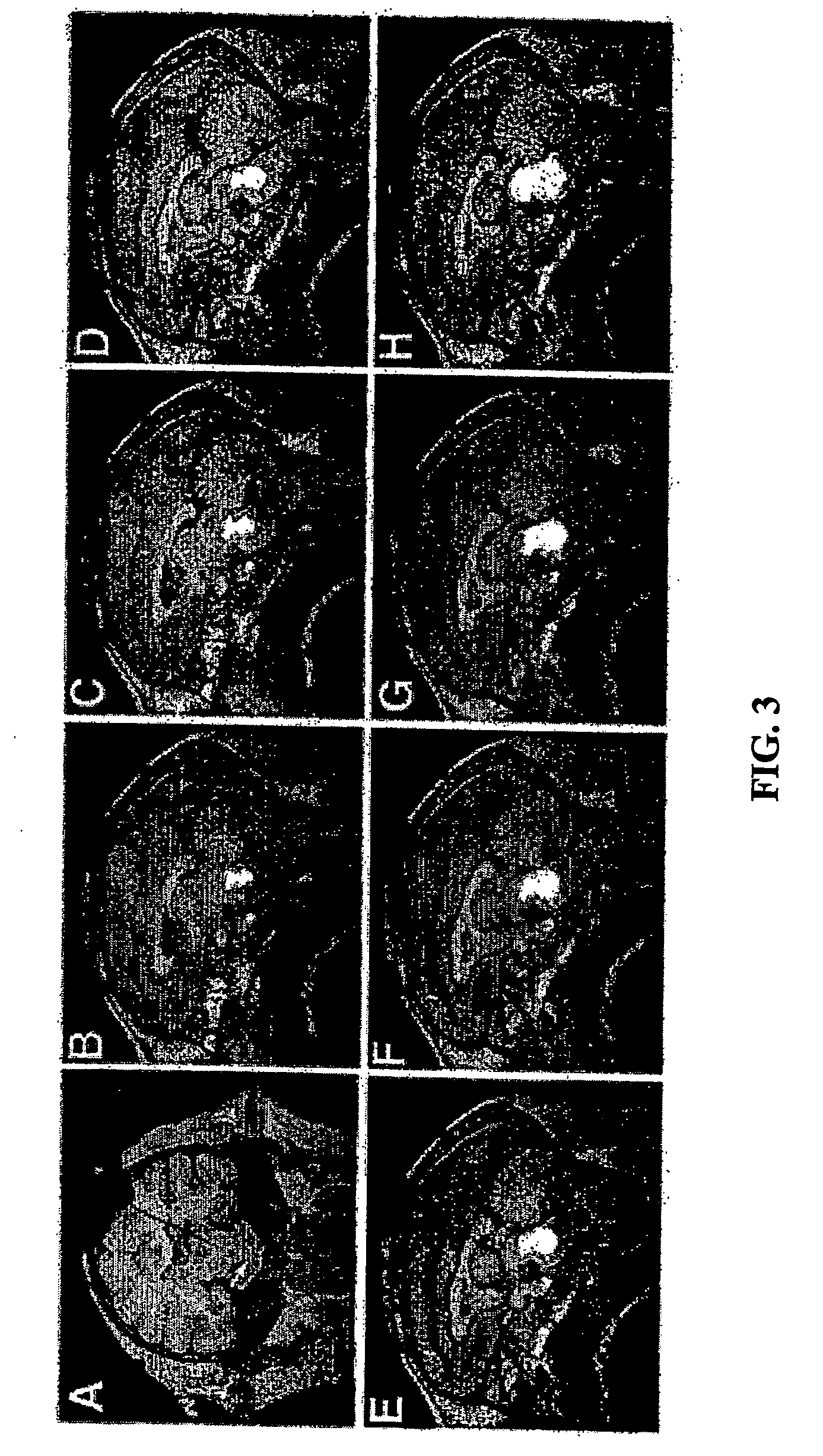Method for convection enhanced delivery of therapeutic agents
a technology of enhanced delivery and therapeutic agents, applied in the field of convection enhanced delivery of therapeutic agents, can solve the problems of limiting the effective use of agents to the cns, affecting the treatment effect of intrinsic diseases, and affecting the effect of therapeutic substances in the treatment of intrinsic diseases, so as to improve safety, accurately correlate to the spread, and accelerate imaging
- Summary
- Abstract
- Description
- Claims
- Application Information
AI Technical Summary
Benefits of technology
Problems solved by technology
Method used
Image
Examples
example 1
[0079] This example describes the preparation and characterization of a tracer comprising a protein conjugated to a metal chelate, and its use in following, in real time and in vivo, CED in the primate brainstem using MRI.
[0080] 2-(p-isothiocyanotobenzyl)-6-methyldiethylenetriamine pentaacetic acid (1B4M) [see, Brechbiel and Gansow, Bioconjug Chem, 2:187-194 (1991)] was conjugated to human serum albumin (HSA) by modification of a previously described method [see, Mirzadeh et al., “Radiometal labeling of immunoproteins: covalent linkage of 2-(4- isothiocyanatobenzyl)diethylenetriaminepentaacetic acid ligands to immunoglobulin,”Bioconjug Chem 1:59-65 (1990)]. Briefly, 100 to 150 mg of HSA was dissolved in 20 ml of 50 mM sodium bicarbonate, 0.15 M NaCl at pH 8.5. To this solution, 45 mg 1B4M dissolved in 1 ml H2O (initial ratio of ligand to HSA of 30) was then added. The reaction mixture was rotated at room temperature overnight. The unreacted or free ligand was then separated from HS...
example 2
[0105] Convection-enhanced delivery (CED) allows distribution of therapeutic agents to large volumes of brain at relatively uniform concentrations. This mode of drug delivery offers great potential for treatment of many neurological disorders, including brain tumors, neurodegenerative diseases and seizure disorders. Treatment efficacy and prevention of unwanted toxicity using the CED approach, however, depend on the infused therapeutic agent being distributed in a targeted manner to the targeted region, while mmnizing delivery to non-target tissue, and in concentrations that are in the therapeutic range. As demonstrated above in Example 1, MRI may be used to visualize the process of CED.
[0106] In this Example, accurate and uniform delivery of therapeutic agents during CED is confirmed and monitored in real time with the noninvasive imaging technique X-ray computed tomography (CT). The CT technique is also compared to the MRI technique. Tracers comprising albumin conjugated to iopan...
example 3
[0130] In this example, CED incorporating the use of an iodine-based surrogate tracer and computed tomographic (CT)-imaging is demonstrated.
[0131] Four primates (Macaca mulatta) underwent CED of various volumes (total volume of 90 to 150 μl ) of iopamidol (777 Da) in the cerebral white matter combined with CT-imaging during and after infusion (up to 5 days post-infusion), as well as quantitative autoradiography (QAR). Clinical observation (≦20 weeks) and histopathology were used to evaluate safety and toxicity.
[0132] Real-time CT-imaging of the tracer during infusion revealed a clearly defined region of perfusion. The volume of distribution (Vd) increased linearly (R2=0.97) with increasing volume of infusion (Vi). The overall Vd:Vi ratio was 4.1±0.7 (mean±S.D.). The distribution of infusate was homogeneous. QAR confirmed the accuracy of the imaged distribution for a small (sucrose; 359 Da) and a large (dextran; 70 kDa) molecule. The distribution of infrsate was identifiable up to ...
PUM
| Property | Measurement | Unit |
|---|---|---|
| Volumetric flow rate | aaaaa | aaaaa |
| Volumetric flow rate | aaaaa | aaaaa |
| Flow rate | aaaaa | aaaaa |
Abstract
Description
Claims
Application Information
 Login to View More
Login to View More - R&D
- Intellectual Property
- Life Sciences
- Materials
- Tech Scout
- Unparalleled Data Quality
- Higher Quality Content
- 60% Fewer Hallucinations
Browse by: Latest US Patents, China's latest patents, Technical Efficacy Thesaurus, Application Domain, Technology Topic, Popular Technical Reports.
© 2025 PatSnap. All rights reserved.Legal|Privacy policy|Modern Slavery Act Transparency Statement|Sitemap|About US| Contact US: help@patsnap.com



